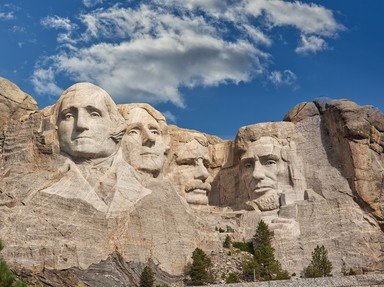Quiz Answer Key and Fun Facts
1. From 1840 to 1960, seven of eight presidents died in office after being first elected in a year ending in zero. The only exception in that pattern occurred during the nineteenth century. Which president is the exception?
2. Prior to the 2000 election, nine presidents assumed the office by means of succession rather than election. Who was the first vice president to assume the Presidency due to a vacancy or disability in the office?
3. In March 1801, John Adams becomes the first president to serve a single term of office after being defeated for a second term in the 1800 election. However, which president was the first to make a campaign promise not to seek re-election?
4. Throughout the nineteenth century, the United States House of Representatives twice exercised its power to elect the president in the event of a deadlock in the Electoral College. In February 1801, Thomas Jefferson became the first president to be elected by the House of Representatives following the 1800 election. Who was the second president to be elected by the House of Representatives?
5. Effective in March 1789, the United States Constitution was preceded by the Articles of Confederation as a framework of government. Two presidents were involved in its drafting at the Constitutional Convention of 1787; George Washington and which other president?
6. Pursuant to Article IV, Section III of the United States Constitution, new states were admitted to the union in addition to the original thirteen states that declared independence from Great Britain in July 1776. Who was the first president not to be from any of the thirteen states by birth?
7. Inaugurated in March 1853, President Franklin Pierce appoints future Confederate President Jefferson Davis to which cabinet position?
8. Formed in July 1854 in opposition to slavery and running for the Presidency for the first time two years later, who was the first presidential candidate of the Republican Party?
9. Proposed in January 1865, the Thirteenth Amendment abolished slavery throughout the United States. Which president oversaw the ratification of the amendment, and therefore the abolishment of slavery?
10. In November 1892, Grover Cleveland becomes the first president to be elected to a second non-consecutive term. However, Cleveland was certainly not the first to attempt a non-consecutive term of office. Who was the first?
Source: Author
Cuish
This quiz was reviewed by FunTrivia editor
stedman before going online.
Any errors found in FunTrivia content are routinely corrected through our feedback system.

